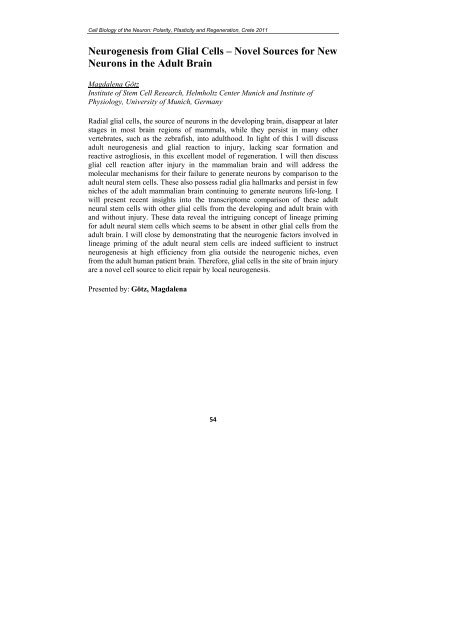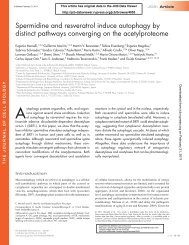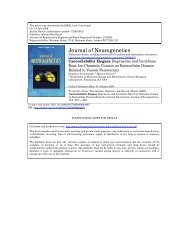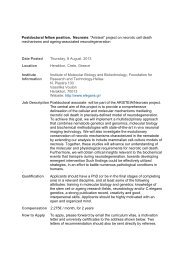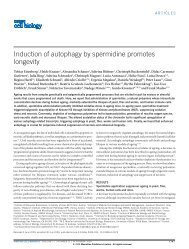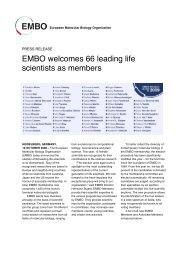CELL BIOLOGY OF THE NEURON Polarity ... - Tavernarakis Lab
CELL BIOLOGY OF THE NEURON Polarity ... - Tavernarakis Lab
CELL BIOLOGY OF THE NEURON Polarity ... - Tavernarakis Lab
Create successful ePaper yourself
Turn your PDF publications into a flip-book with our unique Google optimized e-Paper software.
Cell Biology of the Neuron: <strong>Polarity</strong>, Plasticity and Regeneration, Crete 2011<br />
Neurogenesis from Glial Cells – Novel Sources for New<br />
Neurons in the Adult Brain<br />
Magdalena Götz<br />
Institute of Stem Cell Research, Helmholtz Center Munich and Institute of<br />
Physiology, University of Munich, Germany<br />
Radial glial cells, the source of neurons in the developing brain, disappear at later<br />
stages in most brain regions of mammals, while they persist in many other<br />
vertebrates, such as the zebrafish, into adulthood. In light of this I will discuss<br />
adult neurogenesis and glial reaction to injury, lacking scar formation and<br />
reactive astrogliosis, in this excellent model of regeneration. I will then discuss<br />
glial cell reaction after injury in the mammalian brain and will address the<br />
molecular mechanisms for their failure to generate neurons by comparison to the<br />
adult neural stem cells. These also possess radial glia hallmarks and persist in few<br />
niches of the adult mammalian brain continuing to generate neurons life-long. I<br />
will present recent insights into the transcriptome comparison of these adult<br />
neural stem cells with other glial cells from the developing and adult brain with<br />
and without injury. These data reveal the intriguing concept of lineage priming<br />
for adult neural stem cells which seems to be absent in other glial cells from the<br />
adult brain. I will close by demonstrating that the neurogenic factors involved in<br />
lineage priming of the adult neural stem cells are indeed sufficient to instruct<br />
neurogenesis at high efficiency from glia outside the neurogenic niches, even<br />
from the adult human patient brain. Therefore, glial cells in the site of brain injury<br />
are a novel cell source to elicit repair by local neurogenesis.<br />
Presented by: Götz, Magdalena<br />
54


